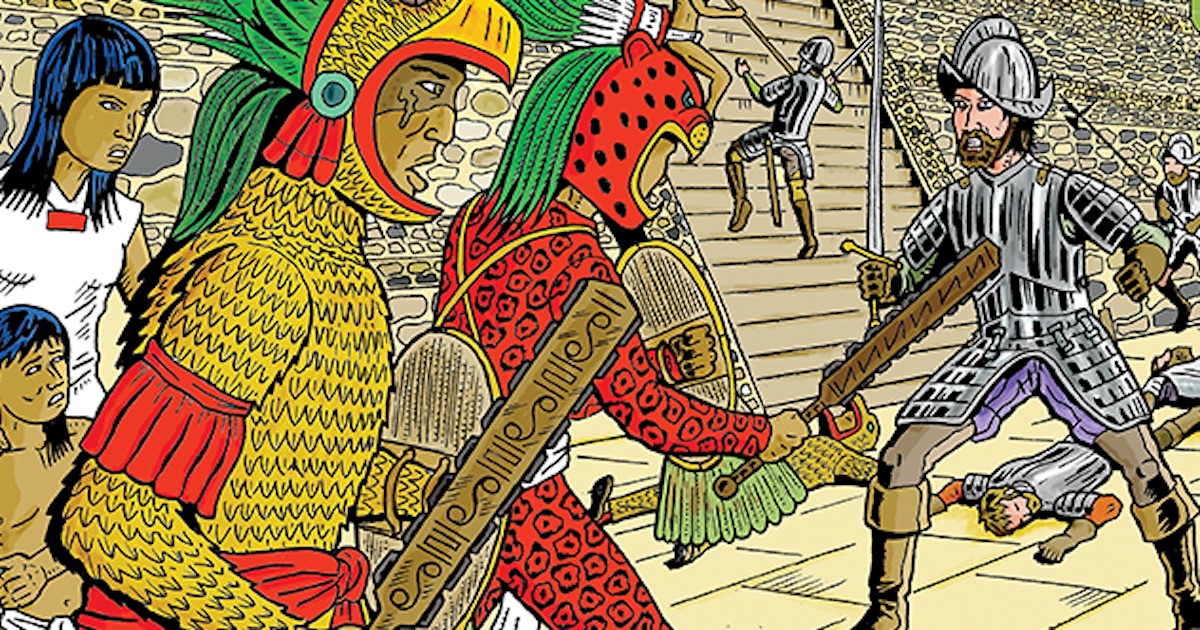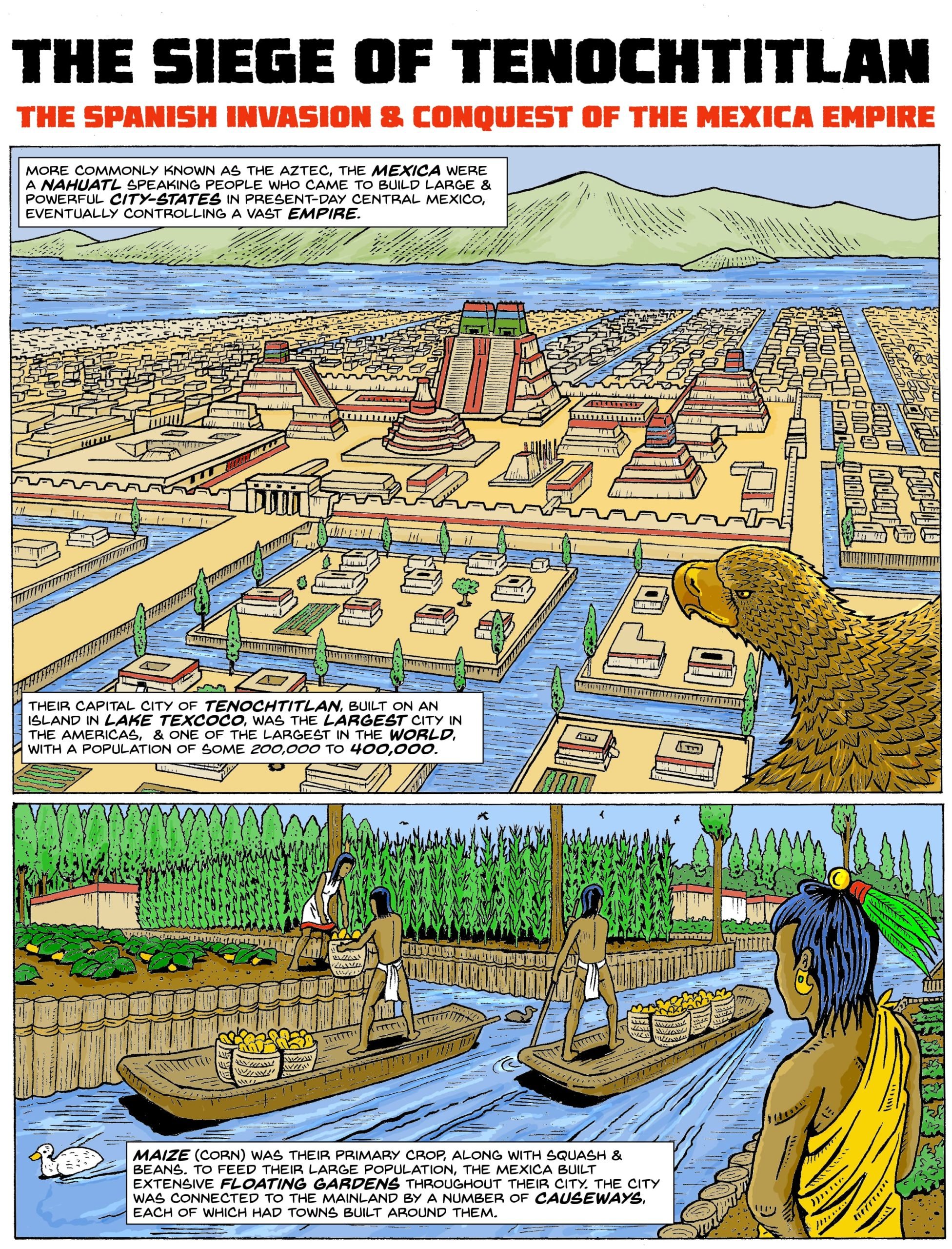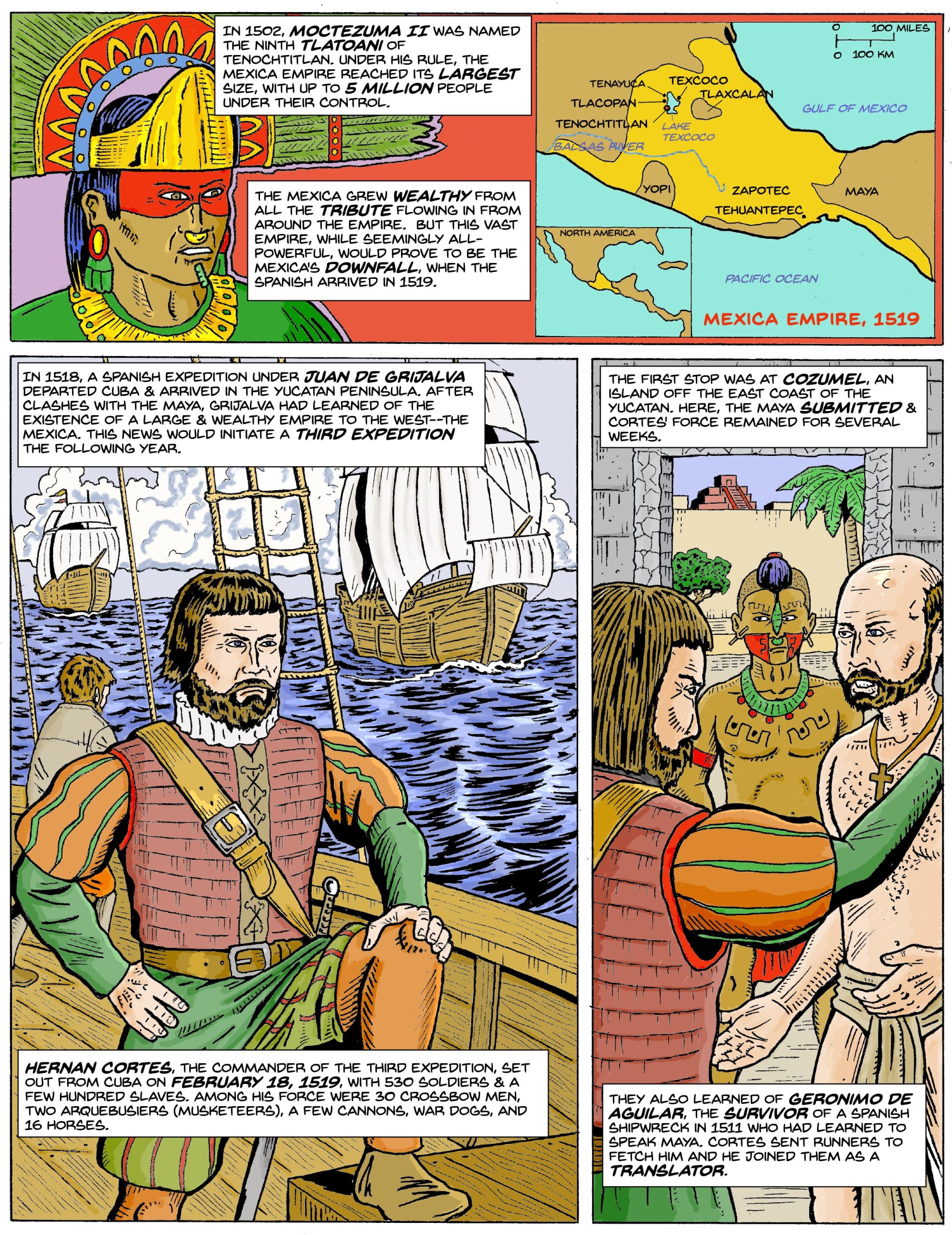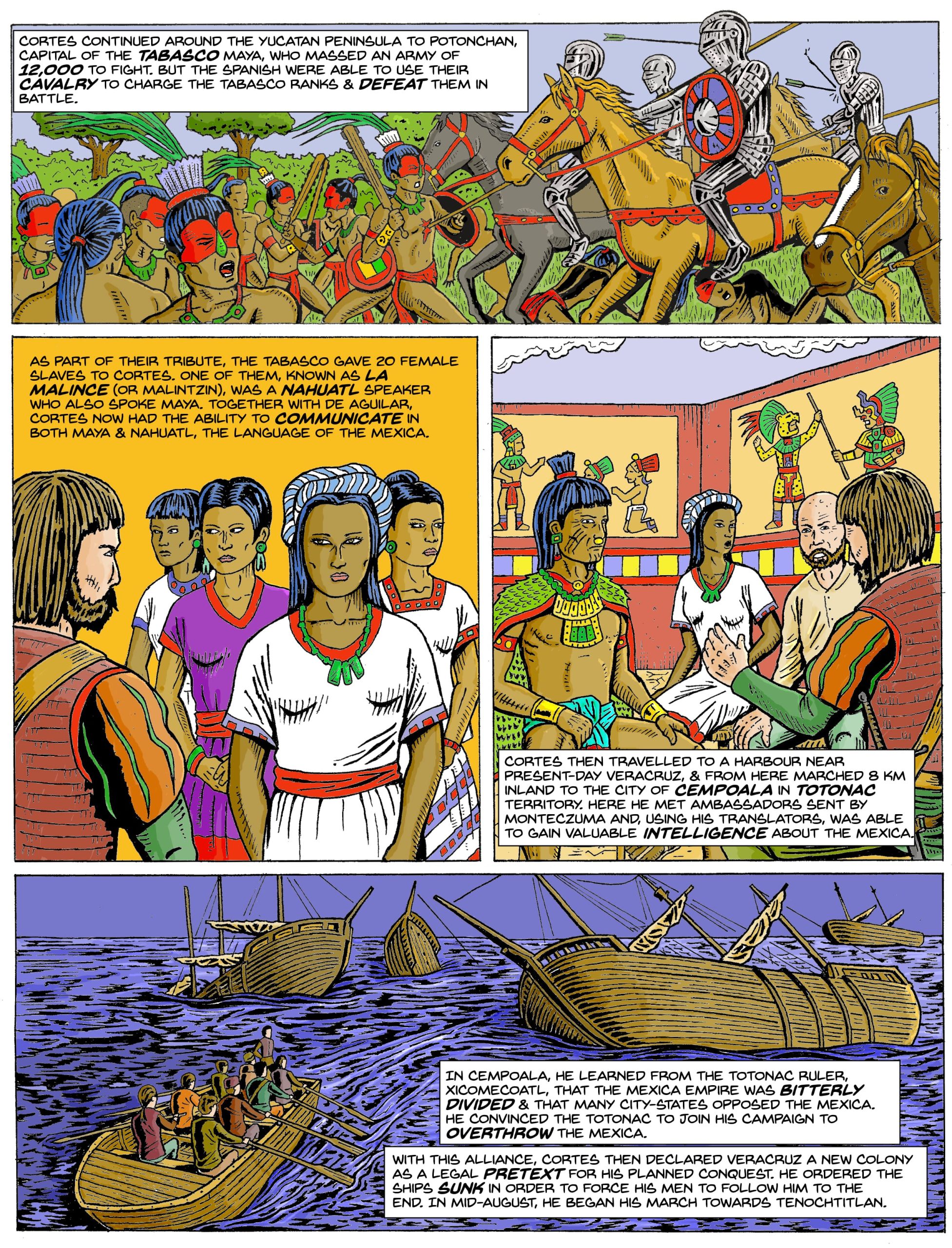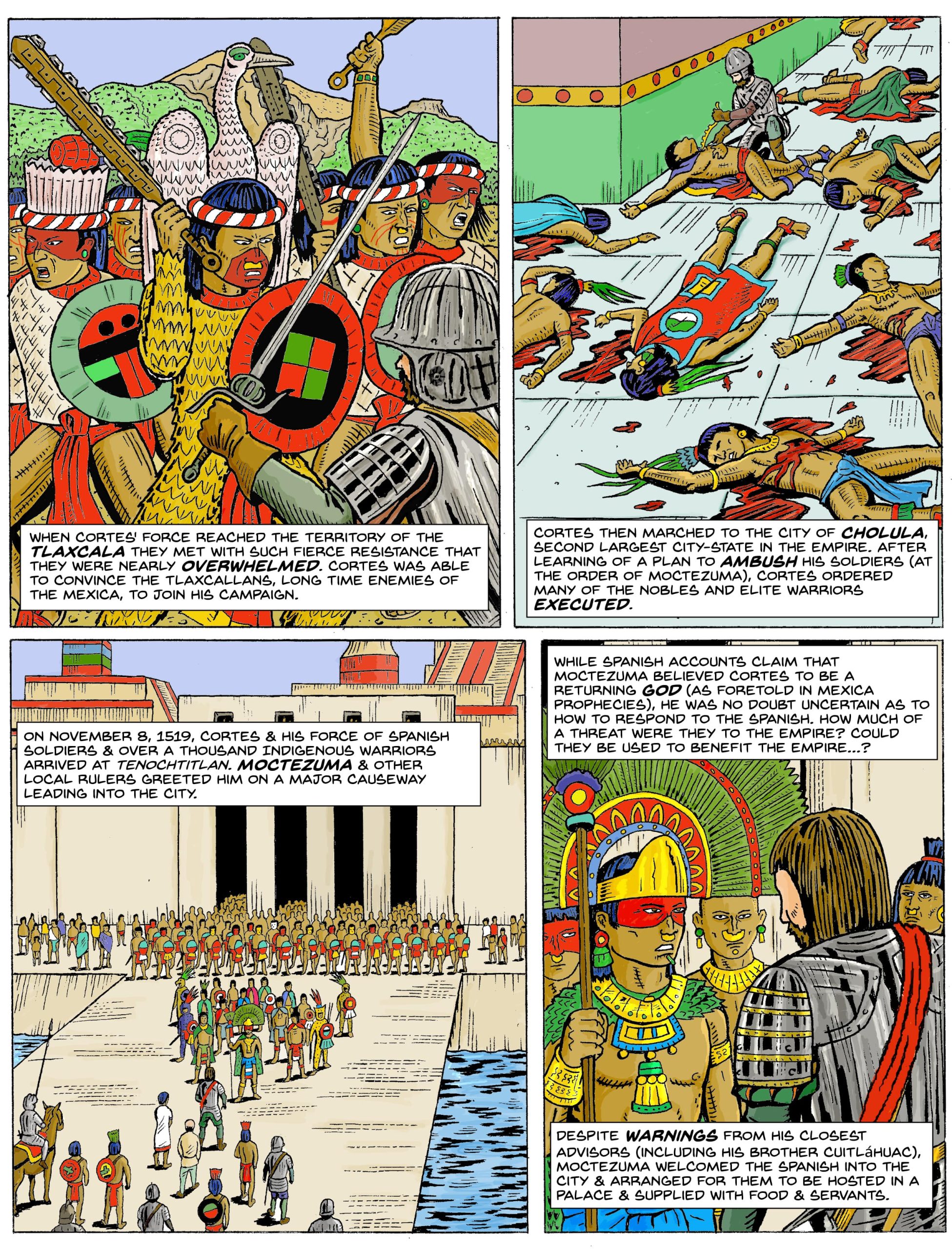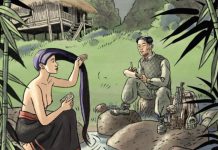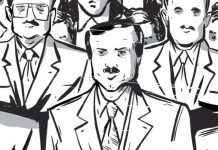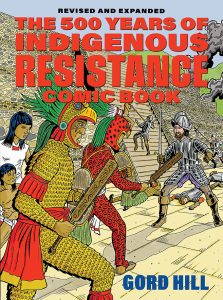
To learn more about this expanded edition, The Beat caught up with Hill over email to find out more about what went into updating this nonfiction book, to find out more about Hill’s firsthand experiences with protests and occupations, and to ask why it is that comics can be an essential tool in unveiling hidden histories.
AVERY KAPLAN: Some readers might be familiar with The 500 Years of Indigenous Resistance Comic Book already, from its initial release. Can you tell us about how the original comic came to be?
GORD HILL: Yes, originally many of the chapters were done as one-off publications, 4-8 page comics, that could be easily reproduced on photocopiers. I started producing them probably around 1998 or so. They were black & white and published on 8×11 inch sheets, or folded 11×17 inch sheets. I did these in order to help maintain a history of Indigenous resistance among new generations that were unaware of even recent examples of resistance, such as Oka 1990 or the 1995 Ts’Peten standoff, or Ipperwash that same year. I would distribute these comics at Indigenous conferences, pow-wows, etc. People could take them and make their own copies. Then over time, I had a small collection of these and a comrade suggested I make a comic covering Indigenous resistance since the landing of Columbus in 1492. Once I had made some additional chapters another comrade took it down to Arsenal Pulp Press (in Vancouver, BC) and they wanted to publish it.
KAPLAN: What lead to this revised & expanded edition? Can you tell us about how it differs from the 2010 release? What went into expanding the text? Was it important to include events that have transpired since the first edition was released?
HILL: I wasn’t happy with the first version and had wanted to redo it for some time. Much of the artwork was from the late ’90s and early 2000s, at a time when I wasn’t very focused on drawing comics nor very skilled. Some of the history was incorrect and there were large gaps that I had wanted to fill in. This new, revised version is in full color and is 120 pages long, it is also a slightly larger trim size. It has many additional chapters and expands on some chapters that were included in the first edition. The artwork is much better — as is the writing. I took some time to really study human anatomy and hone my general comic art skills. As for expanding the text it required a lot of research and writing the script. The artwork also needed a lot of research to be accurate in terms of clothing, shelters, weapons, etc. It was important to include more recent events for several reasons. First, they are a part of the history of Indigenous resistance and for me it is very important to maintain this history as it serves as inspiration for current generations as well as a source of knowledge on strategies and tactics. More current struggles may also seem more relevant to current generations and certainly the tactics used in these more modern actions will probably be more relevant.
KAPLAN: Why are so many modern actors invested in presenting “resistance” as though it were a new or recent development?
HILL: I think a big part of it is because every social movement or resistance movement that exists over a long period of time undergoes periods of renewal and resurgence. We’ve certainly seen this in the last few years with many different movements including Black Lives Matter, anti-fascist resistance, as well as Indigenous struggles, and a new generation emerging. And I think what happens is you have a lot of young people joining in and for them it’s all new and many don’t have a strong grasp of the history of resistance they are engaging in.
KAPLAN: In the preface for the 2010 edition, you mentioned that you have been involved in Indigenous and other social movements since 1988. Can you share a little bit more about your experiences participating in protests, blockades, and occupations?
HILL: Yes, back in 1988 I started becoming involved in Indigenous struggles mostly around the then ongoing Delgamuukw land title court case involving the Gitxsan and Wet’suwet’en nations. I had also become involved in the local Vancouver anarchist movement via the hardcore punk scene. I helped organize rallies & public forums, publish newsletters, etc. I did some solidarity work during the Oka Crisis of 1990 and travelled to San Francisco in 1992 to take part in anti-Columbus Day protests during the 500-year anniversary of the Invasion of the Americas. Around that time, I was also involved in anti-fascist work in Vancouver. In ’95 I did a lot of solidarity work during the Ts’Peten standoff and the subsequent year-long trial that followed. Around then the Native Youth Movement (NYM) had formed in Vancouver, and I worked with them for several years. We carried out occupations of the BC Treaty Commission offices in Vancouver as well as the Westbank First Nation band office. In the summer of 1999, we did security work for the Cheam First Nation, defending them against Department of Fisheries & Oceans (DFO) officers who were attempting to confiscate their fish, boats, and nets. That same year I participated in the anti-WTO riots in Seattle, as well as the 2001 Summit of the Americas riots in Quebec City. Over the next few years, I was involved with Sutikalh, a St’at’imc camp established to protect a pristine mountain range against plans to turn it into a ski resort. We carried out some blockades of Highway 99 during that time and eventually the St’at’imc were successful in defeating the ski resort. I worked with the Secpwemc NYM in their fight against the Sun Peaks expansion in the mid-2000s. In 2010 and the years leading up to it I participated in organizing resistance against the 2010 Winter Olympics in Vancouver, and the next year participated in actions against the G20 in Toronto. Over the past few years I have focused on drawing these comics, working and raising my daughter.
KAPLAN: How are comics an effective way of teaching history? What can they offer that other mediums cannot?
HILL: I think they are effective in communicating to people who may have difficulty reading long historical texts, such as children or even adults with poor literacy skills or who simply lack the time and energy to commit to researching history. The artwork also makes the material more interesting. I think comics makes this history more accessible.
KAPLAN: Why is it that capitalism relies so heavily on incomplete narratives? How can books like this one combat this?
HILL: The narratives that we are largely given under capitalism are designed to reinforce the system and to maintain the population’s loyalty to it, and these narratives of course change over time depending on the current context and social conditions. The history we are taught in the state’s educational system for example will minimize colonial atrocities, genocide etc., and at the same time minimize Indigenous resistance. So we are often left with not only incomplete but contrasting accounts of history. In some of these, Native peoples were helpless victims to European colonization whose attempts at resistance were both weak and futile. During the 1992 campaign against the 500-year mark of the invasion of the Americas one of the main messages that various states were trying to promote was that this had been a mutually beneficial meeting of two worlds and this kind of thing, for example. I’d hope that a book like mine would counter this narrative by focusing on exactly those aspects of colonization that the various colonial states hope to minimize.
KAPLAN: This book is filled with examples of outrageous colonial aggression. Is there any fact that you uncovered while researching that was particularly outrageous or enraging?
HILL: Not really, but only because I’ve been studying this history since the early 1990s. Books like Bury My Heart at Wounded Knee and Conquest Of Paradise: Christopher Columbus and the Columbus Legacy, which I read, along with many others, in the early ’90s, help to document many of these atrocities which are essentially repeated over and over throughout the history of colonization.
KAPLAN: Is there any particular piece of widely believed historical misinformation that should be eradicated?
HILL: It’s hard to narrow it down to one as there are many forms of misinformation but not one that is necessarily so profound that correcting it would be any more consequential than for any other. For myself, I would say there are two main historical misinformation types that I am trying to counter. One is that Indigenous peoples were helpless victims to European colonization, whose attempts at resistance were futile and overshadowed by mass depopulation due to disease epidemics. Another is that all this history of resistance is something that occurred 150 years ago, that it is no longer occurring today, when in fact it is.
The 500 Years of Indigenous Resistance Comic Book: Revised & Expanded Edition is available at a local bookstore or public library beginning today.



